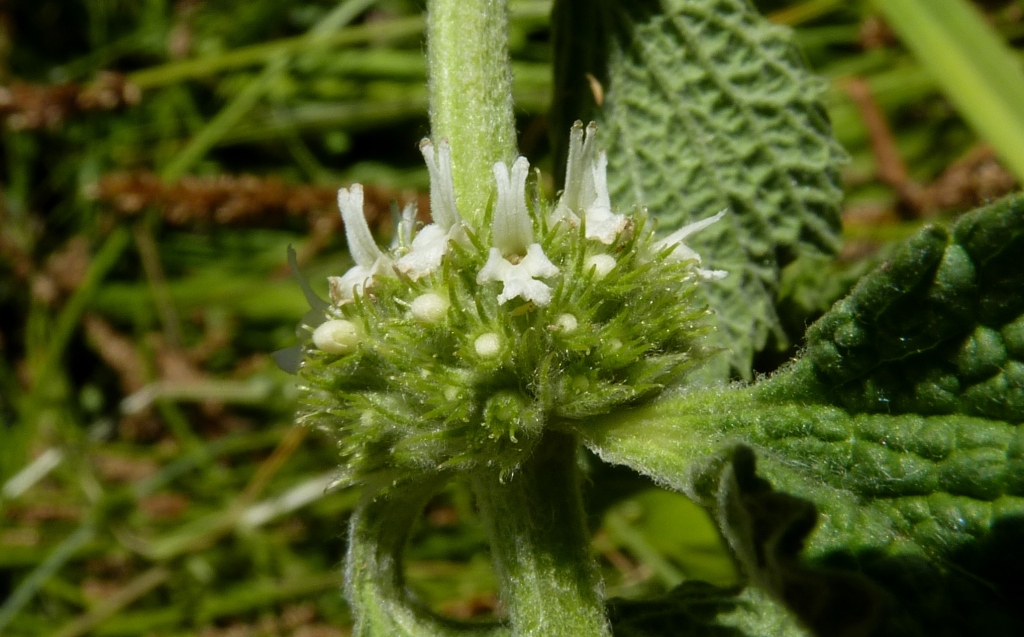Marrubium vulgare
L. HorehoundSoft-wooded shrubs to c. 60 cm high, usually many-branched from near base; branches c. grey-villous with stellately branched hairs. Leaves c. rhombic-ovate to orbicular, c. 1–3.5 cm long, 1–3 cm wide, upper surface woolly to glabrescent, with impressed reticulate venation, lower surface grey-villous, apex obtuse, base broadly cuneate to truncate, margin crenate-serrate to deeply dentate; petiole 2–40 mm long. Pseudowhorls usually 10–many-flowered; bracteoles linear, c. 3–8 mm long, recurved at apex. Calyx 4–7 mm long, lobes narrow, hooked, c. 1–2 mm long, alternating shorter and longer; corolla white, 6–12 mm long; stamens inserted near middle of corolla-tube. Mericarps narrow-obovoid, c. 2 mm long, trigonous, minutely tuberculate. Flowers Jul.–Dec.
LoM, MuM, Wim, GleP, Brid, VVP, VRiv, MSB, RobP, MuF, GipP, OtP, WaP, Gold, CVU, GGr, DunT, NIS, EGL, EGU, WPro, HSF, HNF, OtR, Strz, MonT, VAlp. Also naturalised WA, SA, Qld, NSW, ACT, Tas. Native almost throughout Europe. A widespread and troublesome weed, particularly on alkaline soils and degraded or overgrazed pasture, sometimes colonising bare, eroded ground.
Stock generally avoid grazing the species, but will browse it in the absence of alternative feed resulting in the tainting of meat or milk from those animals.
Conn, B.J. (1999). Lamiaceae. In: Walsh, N.G.; Entwisle, T.J., Flora of Victoria Vol. 4, Cornaceae to Asteraceae, pp. 418–459. Inkata Press, Melbourne.
 Spinning
Spinning



